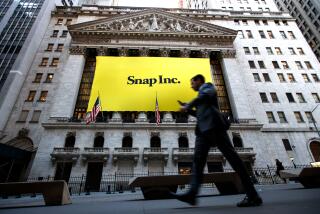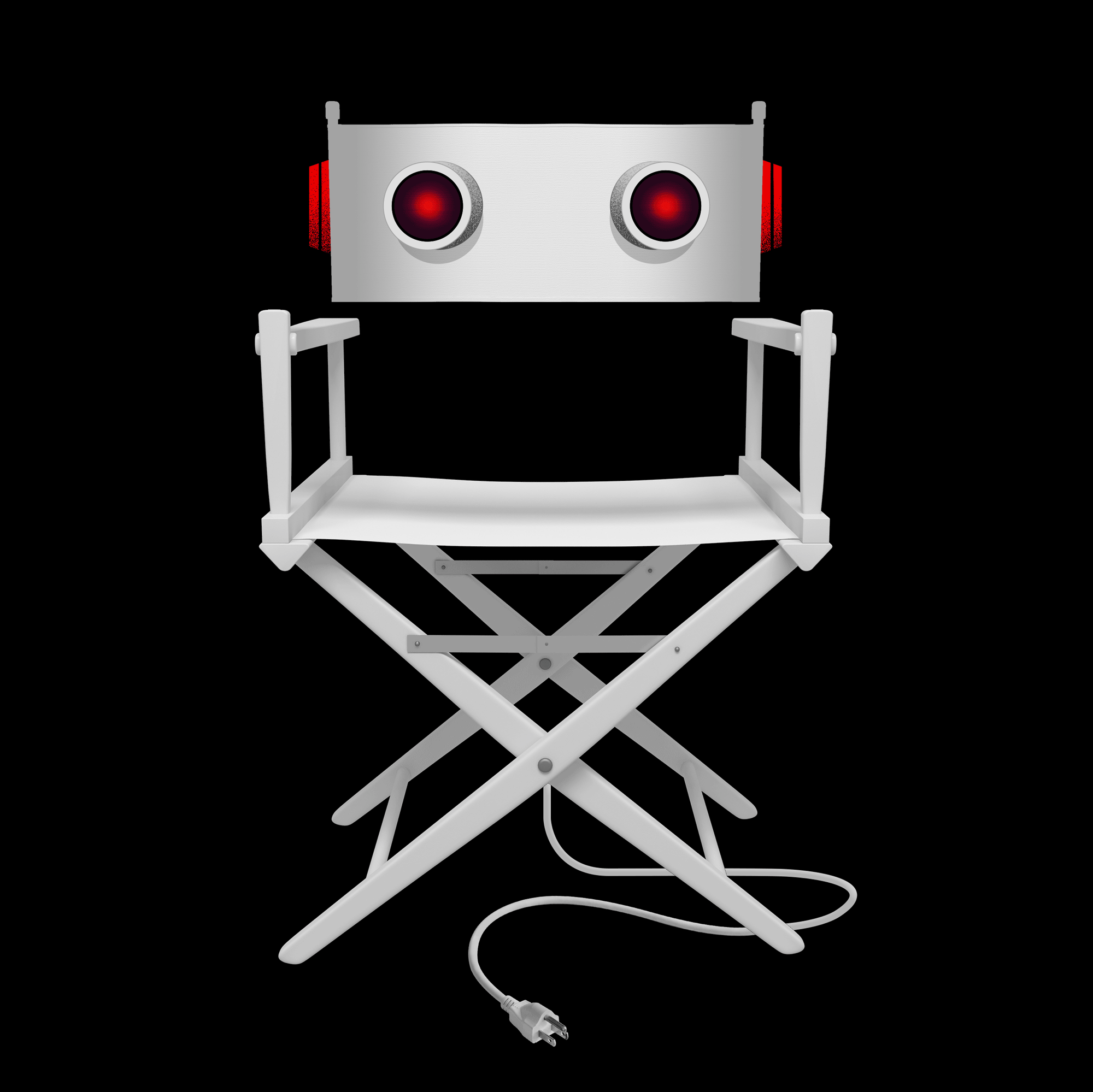Is Snapchat a media company? Even Hollywood can’t decide
- Share via
For its recent film “Fifty Shades Darker,” Universal Pictures created a feature on Snapchat that enabled users to put digital masquerade masks on their selfies — a reference to the kinky R-rated romance.
Young users played with the face-altering lens for up to 40 seconds, an unusually long time in the ephemeral world of social media and a sign that the campaign was making a connection.
“Snapchat is an attractive platform to work with because they have a very engaged audience,” said Doug Neil, Universal’s digital marketing executive vice president. “It’s the right place to be if you want to reach highly desired audiences.”
The unconventional promotional efforts, which began in 2014 with an ad for Universal’s “Ouija,” may be just the beginning of Hollywood’s efforts to use Snapchat to reach millennials. They represent an enigma to major media companies because their viewing habits are vastly different from previous generations.
Hollywood has mixed views on its budding relationship with Snapchat maker Snap Inc., which is poised for its stock market debut Thursday. Some companies have taken the bold step of creating original, bite-sized programming for Snapchat’s video and publishing platform, dubbed Discover. Yet not everyone is ready to go all-in with Snapchat. The major movie studios and production companies have preferred to use the app as a marketing tool for their big-screen offerings, hoping to target teens and young adults who increasingly devour content though mobile phones.
Viacom’s Paramount Pictures created ads for “Office Christmas Party” that specifically targeted Snapchat users interested in comedy. Sony made a lens (an image-altering feature) for “Ghostbusters” last year to let fans use their cameras to catch digital ghosts. And Universal created a special lens to promote the animated musical “Sing,” featuring Gunter the pig.
Nonetheless, it’s clear that the Venice-based social messaging app sees entertainment as a key part of its future business, analysts said. Virtually all of Snap’s revenue comes from advertising, and having original content is crucial for driving eyeballs to its ads. Snap already has deep ties to Hollywood — its new chairman, Michael Lynton, previously ran Sony Entertainment.
“One of the things that’s getting lost is that Snapchat is evolving from a social platform into a real media company,” said Peter Csathy, founder and chairman of Creatv Media, a business development and advisory firm. “All Hollywood players should look at that platform as an opportunity.”
Snapchat has spent the last two years teaming with TV networks and publishers to create shows with the likes of MTV and Vice Media. Snapchat has signed deals with NBCUniversal, Discovery Communications and Disney-ABC Television Group to make short-form shows for its collection of original video channels. Other programming deals are expected to follow after Snap begins trading on the New York Stock Exchange as it tries to raise money to fuel growth while giving its early investors a healthy return.
Just last month, Discovery signed a pact to make shows for Snapchat, including programming inspired by its famous shows including “Shark Week” and “Mythbusters,” as well as original ideas from divisions including Investigation Discovery, Animal Planet and Science. Strategies vary widely among programmers, but episodes on Snapchat are typically three to six minutes long and are available for one day. A series can consist of as many as 24 episodes, often published daily or weekly.
Discovery Communications Chief Commercial Officer Paul Guyardo, who overseas ad sales and digital initiatives for the Silver Spring, Md.-based cable programmer, said Snapchat is an important way to reach younger consumers. Only 11% of 18- to 34-year-olds watch the company’s cable channels, he said. Discovery hasn’t announced what its first shows will be, but Guyardo said the company has a team of three to four employees devoted to developing and producing Snapchat material.
“This really is an opportunity to perfect our ability to create short form content,” Guyardo said. “It’s got to be much more snackable. It’s got to be instantly engaging and something that’s going to attract the attention of a younger audience.”
In another recent example, Disney-ABC Television Group made a pact with Snap to make shows for the service, including a companion piece for the reality matchmaking program “The Bachelor.”
Other networks have gotten a head start making material for Snapchat’s vertical video portal, sometimes designing offshoots of their previously existing shows. NBC, for example, created a version of “The Voice” in which viewers submit their own video auditions for the chance to appear on the singing show. E! News has launched a pop culture wrap-up show called “The Rundown,” which chronicles events such as Sunday’s Oscars.
John Najarian, executive vice president of E! News, said about 75% of “The Rundown’s” audience is 13 to 24 years old, he said.
“There is no road map,” Najarian said. “It’s not just taking television content and putting it in a vertical format. There’s a different feel and a different pace to it.”
Details about the success of these content initiatives are sparse. About 158 million people open Snapchat each day, but neither Snapchat nor its video partners disclose viewership of their shows. Snapchat said it shared nearly $58 million in ad revenue with media companies last year, but the figure doesn’t include revenue content partners earn from ads that they sell themselves. And networks declined to say how much they plan to spend on Snapchat programming.
Executives concede the Hollywood-Snapchat relationship is still in its experimental stages, where both sides are trying to learn what kinds of shows work. It remains to be seen when and how the movie studios will invest in Snapchat content, or whether they will continue to view the platform primarily as an advertising tool.
One concern studio executives have is whether their big-screen franchises can translate to the tiny screen format. There’s good reason for skepticism. Studios have long struggled to convert their expertise in making full-length movies to creating popular shows for online spaces such as YouTube and Facebook.
But Creatv Media’s Csathy said Hollywood players risk being left behind if they don’t figure out how to make Snapchat shows soon.
“I think those who didn’t take the plunge are kicking themselves now,” he said.
More to Read
Inside the business of entertainment
The Wide Shot brings you news, analysis and insights on everything from streaming wars to production — and what it all means for the future.
You may occasionally receive promotional content from the Los Angeles Times.











